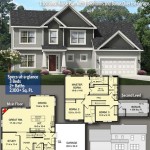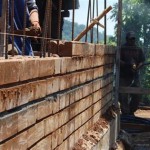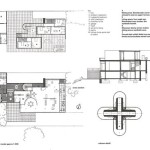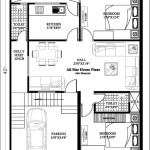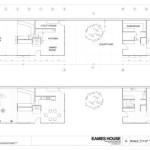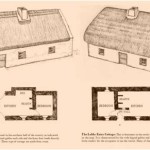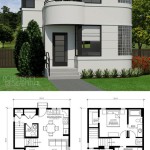House Porch Plans
A porch adds character, curb appeal, and valuable living space to a home. Careful planning is essential to ensure the porch complements the existing architecture and meets the homeowner's needs. This article explores key considerations for house porch plans, from initial design concepts to material selection.
Defining the Porch's Purpose
Before delving into design specifics, defining the porch's intended use is crucial. Will it primarily serve as a relaxing space for quiet evenings, a welcoming entryway for guests, or an outdoor dining area? The intended function will dictate the size, layout, and features of the porch.
Considering Architectural Style
The porch design should harmonize with the existing architectural style of the home. A Victorian-era house might benefit from a wrap-around porch with intricate gingerbread trim, while a modern farmhouse could feature a simple, covered porch with clean lines. Maintaining architectural consistency ensures the porch enhances rather than detracts from the home's overall aesthetic.
Determining the Porch Size and Layout
The size and layout of the porch are determined by the available space and intended function. A small, cozy porch might be sufficient for a single rocking chair and a small table, while a larger porch can accommodate multiple seating areas, dining furniture, and even a swing. Careful consideration should be given to traffic flow and accessibility.
Choosing Appropriate Materials
The choice of materials impacts the porch's durability, maintenance requirements, and overall appearance. Common materials include:
- Wood:Offers a classic look but requires regular maintenance.
- Composite: A low-maintenance alternative to wood, offering durability and resistance to rot and insects.
- Vinyl: A cost-effective and low-maintenance option, but may not offer the same aesthetic appeal as wood or composite.
- Aluminum: A lightweight and durable option, often used for railings and supports.
Roofing Options for Porches
The porch roof should complement the main roof of the house while providing adequate protection from the elements. Popular roofing options include:
- Matching the existing roof: Creates a seamless transition between the house and porch.
- Metal roofing: A durable and low-maintenance option, available in a variety of colors and styles.
- Polycarbonate panels: Allow natural light to filter through while providing protection from rain and UV rays.
Essential Porch Features
Several features can enhance the functionality and comfort of a porch:
- Railings: Provide safety and add a decorative element.
- Steps and ramps: Ensure easy access to the porch.
- Lighting: Creates ambiance and improves safety for evening use.
- Ceiling fans: Provide cooling airflow during warmer months.
- Electrical outlets: Offer convenience for lighting, fans, and other electrical devices.
Building Permits and Regulations
Before beginning construction, it's essential to check local building codes and obtain the necessary permits. Regulations may dictate the porch's size, height, setbacks, and required safety features. Compliance with local regulations ensures the project meets safety standards and avoids potential legal issues.
Working with a Professional
While some homeowners may choose to tackle porch construction themselves, working with a qualified contractor or architect offers several advantages. Professionals possess the expertise to design a structurally sound and aesthetically pleasing porch. They can also navigate the permitting process and ensure the project adheres to building codes. Furthermore, experienced professionals can often complete the project more efficiently and cost-effectively than a DIY approach.
Planning for Drainage and Water Management
Proper drainage is crucial to prevent water damage to the porch and the surrounding area. The porch design should incorporate features such as gutters, downspouts, and proper sloping to direct water away from the structure. Adequate drainage prevents issues such as wood rot, foundation problems, and mosquito breeding.
Accessibility and Universal Design
Incorporating accessibility features into the porch design ensures individuals with mobility limitations can comfortably access and enjoy the space. Ramps, wider doorways, and handrails can make the porch more user-friendly for everyone. Considering accessibility from the outset can add significant value and inclusivity to the porch design.
Budget Considerations
Establishing a realistic budget is crucial before embarking on a porch project. The cost of building a porch can vary significantly depending on the size, materials, and complexity of the design. Obtaining quotes from multiple contractors can help homeowners compare prices and make informed decisions. Careful budgeting helps avoid cost overruns and ensures the project aligns with financial capabilities.

Simple House Plans With Porches Wrap Around Porch Small Floor

Southern Living Dreamy House Plans With Front Porches Blog Dreamhomesource Com

Beautiful Small Country House Plans With Porches Houseplans Blog Com

Minimalist Floor Plans With Porches Houseplans Blog Com

Small Ranch House Plan Two Bedroom Front Porch 109 1010 Plans Floor Tiny

Southern Living Dreamy House Plans With Front Porches Blog Dreamhomesource Com
:max_bytes(150000):strip_icc()/SL-2063_grace-park-cottage-bdb8065f18cd4396a175c11232b1c2c4.jpg?strip=all)
30 Pretty House Plans With Porches

Minimalist Floor Plans With Porches Houseplans Blog Com

Plan 46075hc Simply Sweet 2 Bed Cottage With Front Porch Floor Plans Small House

Small House Floor Plans Country

